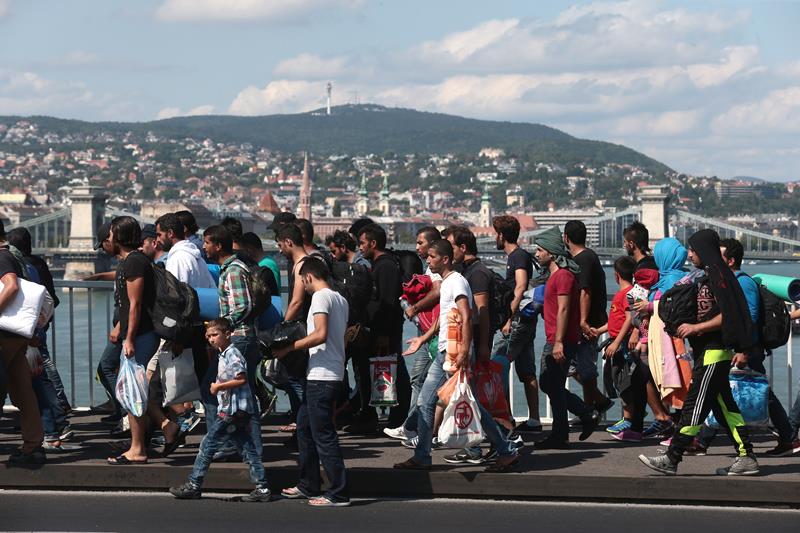The refugee crisis in Europe continues, and it has quickly become an election issue here in Canada.

The numbers are staggering: The International Organization for Migration says more than 364,000 migrants have arrived in Europe so far – and over 2,800 have died along the way.
More than 160,000 of them have entered Hungary. But many have grown frustrated after being stuck at two train stations in the country and have set off on foot for Austria.
The moves for freedom came after Hungarian authorities spent days preventing thousands of people, many fleeing war in Syria, from boarding trains to Germany amid a surging number of desperate people from Asia, Africa and the Middle East seeking refuge in Europe.
Most hope to eventually reach Germany or elsewhere in the West and are trying to avoid registering in Hungary, which is economically depressed and more likely to return them to their home countries than other Western European nations.
Under European law, asylum seekers will be approved or disapproved in the countries where they are first registered.
Hundreds set out from the Keleti station in Budapest. With their belongings in bags and backpacks, they snaked through the streets of Budapest as they began the 171-kilometre journey to the Austrian border.
By mid-afternoon they had reached the M1 motorway outside the city and by early evening they had covered about 20 kilometres.
Also Friday, the Hungarian parliament tightened its immigration rules, approving the creation of transit zones on the Hungarian border with Serbia where migrants would be kept until their asylum requests were decided within eight days. Migrants would have limited chance to appeal those decisions.
This comes as Hungarian Prime Minister Viktor Orban has been building a barbed wire fence on the border with Serbia to stop the huge flow of migrants.
Across Europe, the refugee crisis is becoming more dramatic. In Geneva, the UN refugee agency said Friday that nearly 5,600 people crossed from Greece to Macedonia a day earlier. That’s roughly double the 2,500 to 3,000 per day seen in recent weeks.
With files from The Associated Press.










Comments